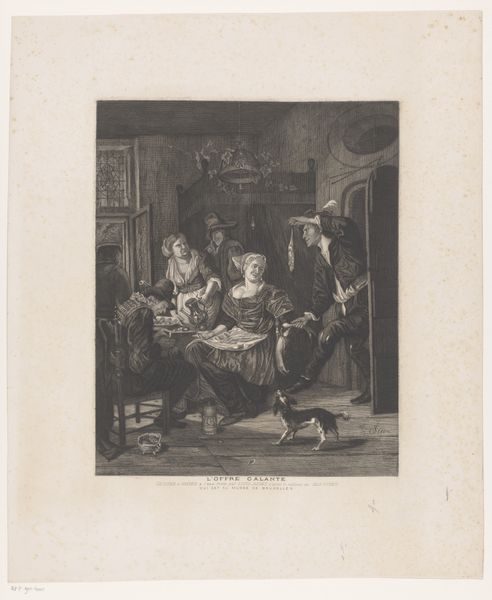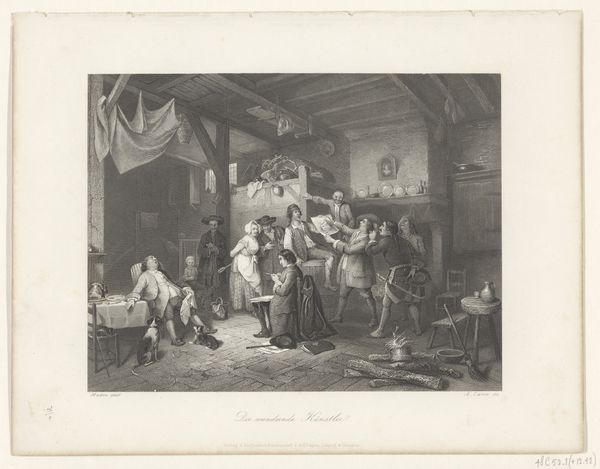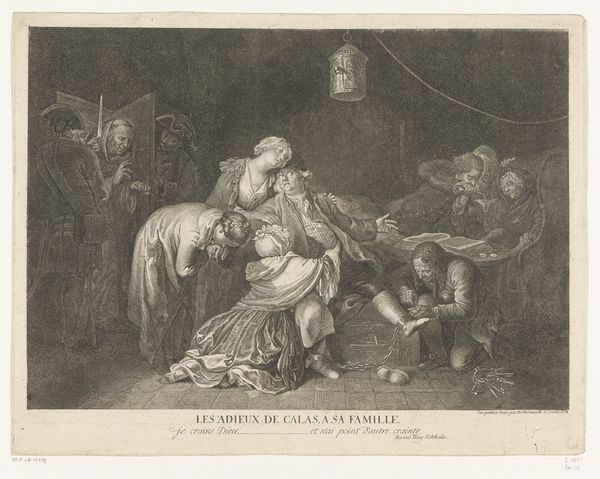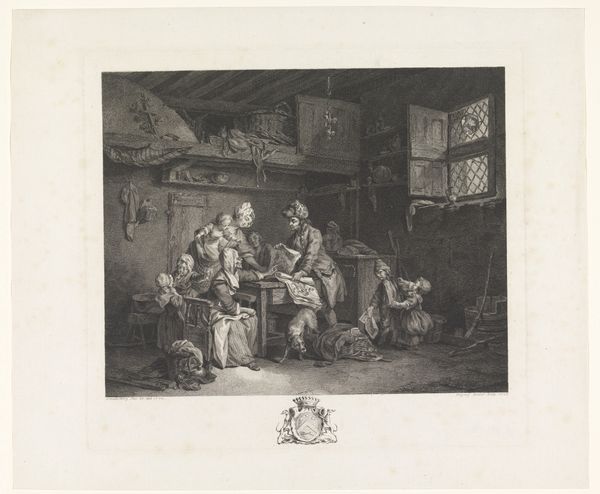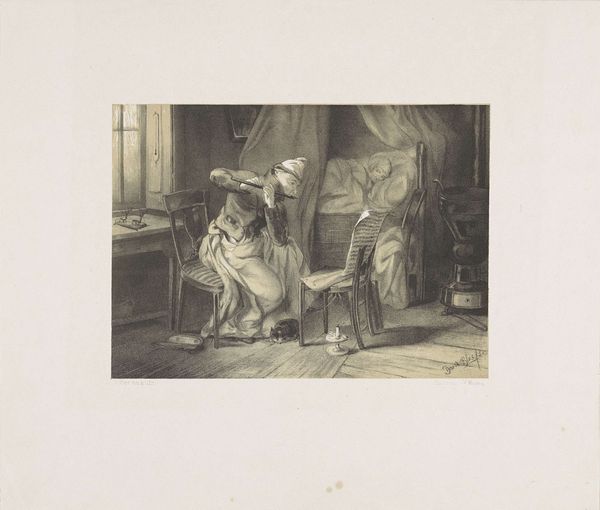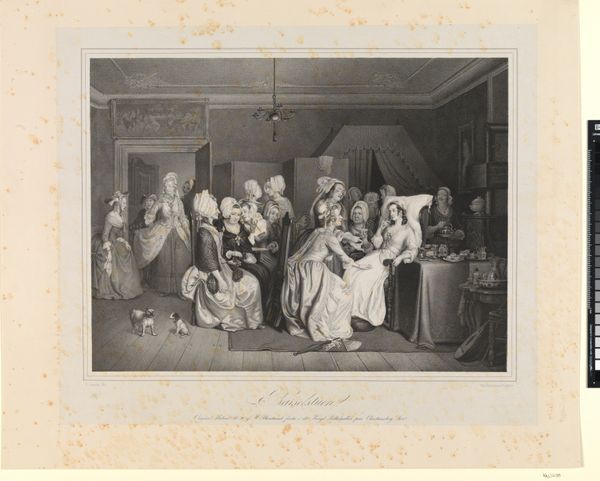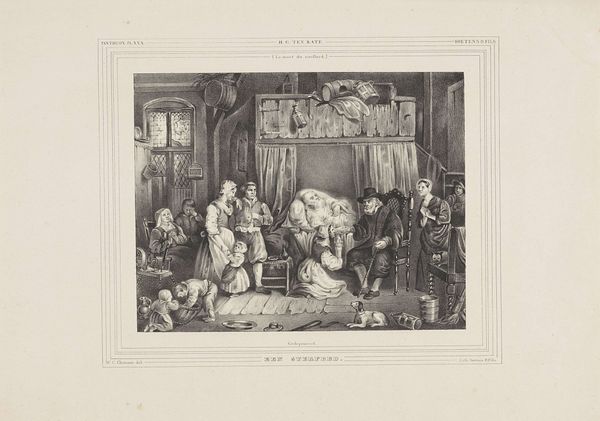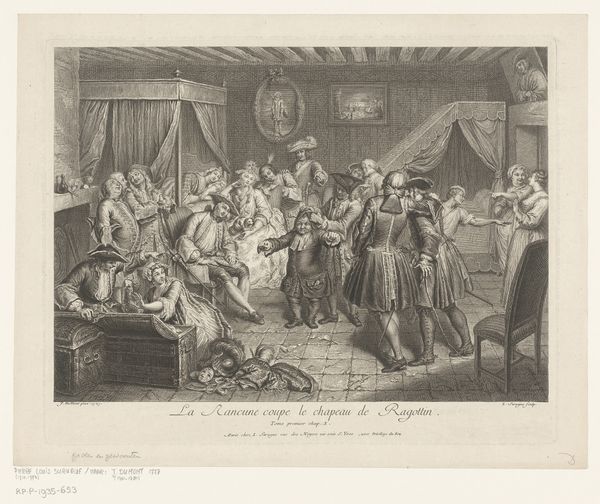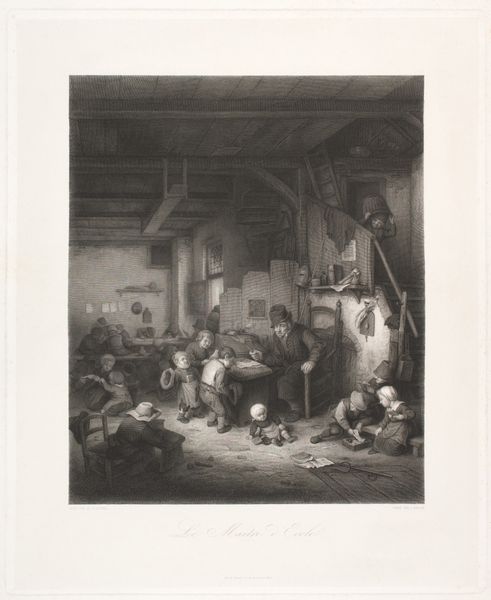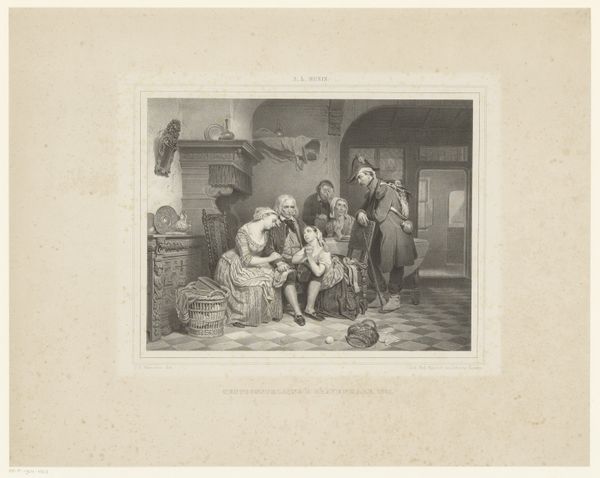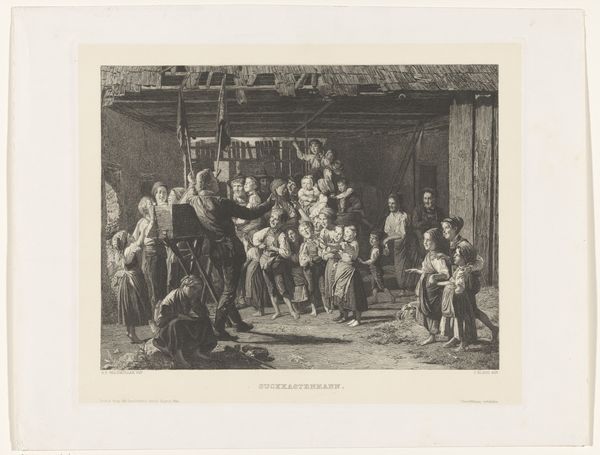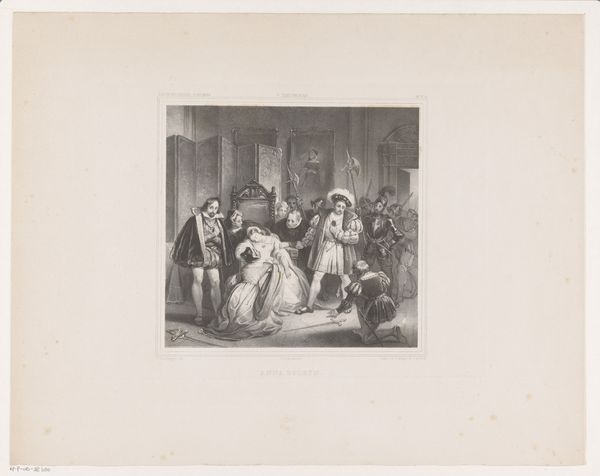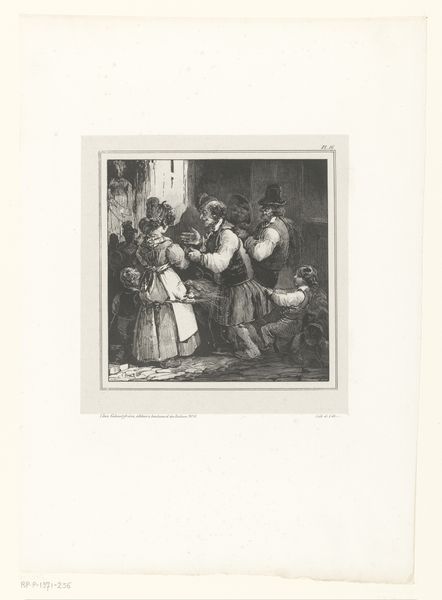
print, engraving
#
narrative-art
#
dutch-golden-age
# print
#
landscape
#
folk-art
#
genre-painting
#
engraving
#
realism
Dimensions: height 450 mm, width 516 mm
Copyright: Rijks Museum: Open Domain
Editor: Here we have "Terugkomst van de haringvangst," or "Return of the Herring Catch," a print made sometime between 1866 and 1904 by Willem Steelink. It’s a touching scene of what looks like a family reunion. What strikes you most about this image? Curator: What immediately grabs me is the tension between celebration and the socio-economic realities it presents. Consider the engraving itself, a reproduction of a painting making art more accessible to the masses, but it also flattens the image and diminishes the artist's original intention. Editor: That's interesting! I hadn't considered that the medium itself had a kind of social context. Curator: Exactly! Then look at the scene itself. While ostensibly joyful, it highlights the family's dependence on the dangerous and precarious herring industry. Are they celebrating the man’s return or the survival of their livelihood? And what does that labour cost this family, this community, emotionally, generationally? Look at how domestic labor and caring for the family also fall primarily to the women depicted. Editor: It definitely makes you rethink the initial feeling of simple happiness. It seems more complex when you factor in the work, gender roles and economic situation in this coastal Dutch community. Curator: Precisely. This image provides a space to question not just what is depicted, but who is included, excluded, and what that labor demands. It reveals that the idyllic image often masks deeper power dynamics. What do you think the image would be if the perspective was the children on the floor instead? Or maybe an image focussed on the labor? Editor: Wow, I am seeing it in a different light now! Thinking about labor dynamics makes me really rethink how these scenes are framed. Curator: Absolutely! It shows the power of art to reflect and critique social realities, if we engage with it critically.
Comments
No comments
Be the first to comment and join the conversation on the ultimate creative platform.
